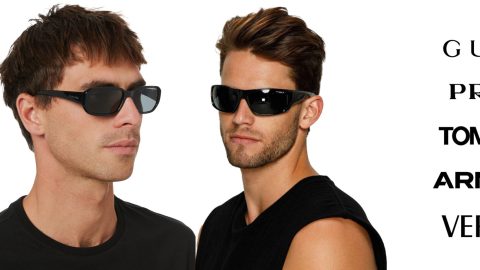Ray-Ban inventing the original aviator sunglasses is the stuff of legends. In fact, just run an internet search on “who invented aviator sunglasses?” and you’ll find one site after another giving the credit to Ray-Ban and its former parent company, Bausch & Lomb. But all those sites might be wrong. Yes, they might be wrong.
At the risk of killing a sacred cow, it is quite possible that aviator sunglasses were invented even before Ray-Ban existed. It’s also possible that the aviators Bausch & Lomb made during World War II were competing with similar sunglasses by other manufacturers. To understand it all, we recommend reading an excellent blog post series from well-known eyewear designer Moss Lipow.
Lipow was intrigued by the aviator question back in 2014. So, he did his own independent research. What he discovered challenges much of what we have been told about aviator sunglasses and their Ray-Ban roots.
Early Aviator Predecessors
According to Lipow, the earliest predecessors of modern aviator sunglasses date back to the late 18th century. For example, a Boston enterprise known as the Monitor Co. manufactured a product that they called the Warren Eye Guard. It looked like a pair of sleek goggles designed to protect your eyes at work and play. Monitor marketed them to bicyclists, minors, engineers, yachtsmen, stone cutters, and on and on.
In fairness, the Warren Eye Guard was not a pair of sunglasses in the traditional sense. It was a pair of safety goggles. However, they had the telltale aviator shape – at least the shape that would become the aviator a few decades later.
The Warren Eye Guard was introduced somewhere around 1896. But in 1891, a Kingston, New York optometrist and manufacturer by the name of S. Stern patented a hinged pair of safety glasses for drivers of the newfangled car. They looked more like modern aviator sunglasses than Monitor’s eye guard.
The Aviator’s Military Connections
This brings us to the early 20th century and the claims that Ray-Ban was commissioned by the U.S. military to design a pair of sunglasses for pilots. According to Lipow’s research, the U.S. military did want a pair of sunglasses for its pilots. After years of trial and error, they standardized a set of lenses in November 1941.
Being that the project was a joint one between the Army and Navy, the new lenses were given the specification number AN6531. They were tinted at 50% green tint and made in the shape we now associate with aviators. Eventually, AN6531 Type 2 offered a rose-smoke tint instead of green.
So where do Bausch & Lomb and Ray-Ban come in? Bausch & Lomb was one of several contractors who manufactured the lenses and frames for the military. Note that the frames were not standardized, only the lenses. As for Ray-Ban, it was a civilian division of Bausch & Lomb. It did not make military products. It wasn’t until after World War II that Ray-Ban began making and selling aviators.
Bausch & Lomb’s decision to begin marketing consumer sunglasses similar to the AN6531, under the Ray-Ban name, is probably that which birthed the idea that they invented them. But they didn’t. And in fact, Ray-Ban wasn’t the only one producing retail versions at the time. Many other companies began producing them to capitalize on the success of the war.
So there you have it. If Moss Lipow’s research is correct, we have all believed a myth this whole time. Maybe Ray-Ban didn’t invent aviators. Perhaps they just capitalized on someone else’s idea, à la Bill Gates and Microsoft or Steve Jobs and Apple.
The post Maybe Ray-Ban Didn’t Really Invent Aviator Sunglasses appeared first on Wholesale Sunglasses Blog.



Recent Comments